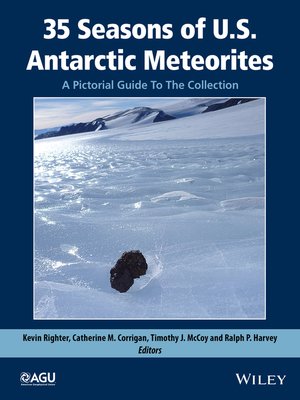35 Seasons of U.S. Antarctic Meteorites (1976-2010)
ebook ∣ A Pictorial Guide To The Collection · Special Publications
By Kevin Righter

Sign up to save your library
With an OverDrive account, you can save your favorite libraries for at-a-glance information about availability. Find out more about OverDrive accounts.
Find this title in Libby, the library reading app by OverDrive.



Search for a digital library with this title
Title found at these libraries:
| Library Name | Distance |
|---|---|
| Loading... |
The US Antarctic meteorite collection exists due to a cooperative program involving the National Science Foundation (NSF), the National Aeronautics and Space Administration (NASA), and the Smithsonian Institution. Since 1976, meteorites have been collected by a NSF-funded field team, shipped for curation, characterization, distribution, and storage at NASA, and classified and stored for long term at the Smithsonian. It is the largest collection in the world with many significant samples including lunar, martian, many interesting chondrites and achondrites, and even several unusual one-of-a-kind meteorites from as yet unidentified parent bodies. Many Antarctic meteorites have helped to define new meteorite groups.
No previous formal publication has covered the entire collection, and an overall summary of its impact and significant samples has been lacking. In addition, available statistics for the collection are out of date and need to be updated for the use of the community. 35 seasons of U.S. Antarctic Meteorites (1976-2011): A Pictorial Guide to the Collection is the first comprehensive volume that portrays the most updated key significant meteoritic samples from Antarctica.
35 seasons of U.S. Antarctic Meteorites presents a broad overview of the program and collection nearly four decades after its beginnings. The collection has been a consistent and reliable source of astromaterials for a large, diverse, and active scientific community.
Volume highlights include:
35 seasons of U.S. Antarctic Meteorites would be of special interest to a multidisciplinary audience in meteoritics, including advanced graduate students and geoscientists specializing in mineralogy, petrology, geochemistry, astronomy, near-earth object science, astrophysics, and astrobiology.







